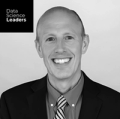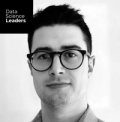episode 18
Lessons from Building a 2,700-Person Analytics Team
Data Science Leaders | 1:08:25 | September 08, 2021

Listen how you want
Get new episodes in your inbox
Dave Frankenfield, VP Enterprise Data and Analytics at Optum, oversees a team of 2,700 data professionals. How do you structure a team of that size? What functions does it cover? And how does it collaborate with and deliver value to the rest of the company?
In this episode, Dave discusses the strategies he’s used to build his team, the lessons he’s learned, and the advice he has for data science leaders scaling teams of any size in the enterprise.
The conversation covers:
- Building an analytics team from the ground up
- Approaches to managing shadow IT
- Tradeoffs between distributed vs. delegated data science teams
Popular episodes

Featured Guest
Mike Gualtieri, VP and Principal Analyst at Forrester

James Cham
Partner, Bloomberg Beta
EPISODE 71April 11, 2024
Unlocking the disruptive potential of generative AI: a VC perspective
Listen Now | 28:49
Volodimir Olexiouk
Director of Scientific Engagement and Data Science Team Lead, BioLizard
EPISODE 70March 28, 2024